Baindu Momoh is a mother from Gbaigibu in Kailahun district, eastern Sierra Leone. Her village is so small and remote it doesn’t show up on most maps—but that doesn’t stop the Sierra Leone Red Cross Society from looking out for the health of her community.
In October 2023, Baindu came rushing to her local Red Cross volunteer, Joseph. Something was deeply wrong. Her baby boy, Senesie, had a fever, was sweating and vomiting, and had a puffy face and eyes. Baindu feared for his life.
Thankfully, Joseph is part of the Community Epidemic and Pandemic Preparedness Programme (CP3) and is trained in how to detect, report, and respond to disease threats—meaning he knew exactly what to do.
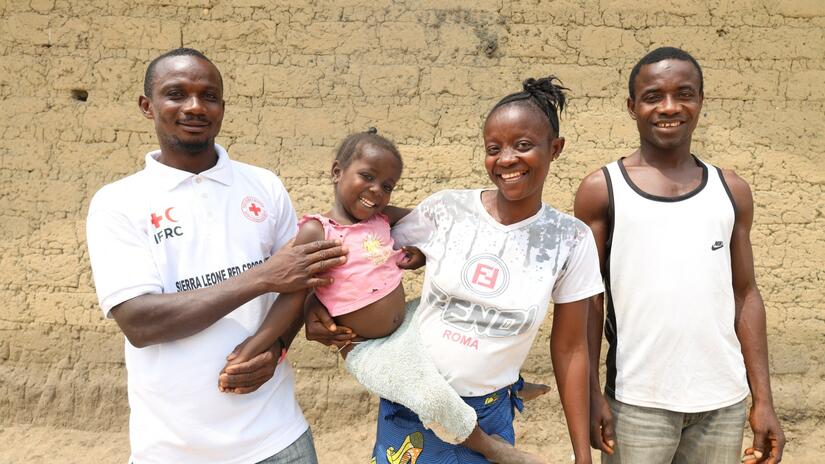
Joseph (left), a Sierra Leone Red Cross Volunteer from Gbaigibu, stands with a family he’s helped keep healthy and safe in his community.
Photo: Sierra Leone Red Cross Society
“I have established strong relationships with both the health facility and the community. When the child’s mother reached out to me in distress, I immediately recognized the urgency of the situation,” explains Joseph.
In the absence of timely local ambulance services, Joseph rushed Baindu and her baby on his motorbike to the nearest Community Health Post in Woroma, where Senesie was diagnosed with severe malaria and anaemia. Baindu was told that, to survive, Senesie needed an urgent blood transfusion—only available at the Kailahun Government Hospital, some 30 miles away.
Without hesitation, Joseph offered to help, explaining:
“As a trained volunteer with a humanitarian organization, my community is my responsibility.”
But in this part of the world, getting to the hospital is easier said than done.
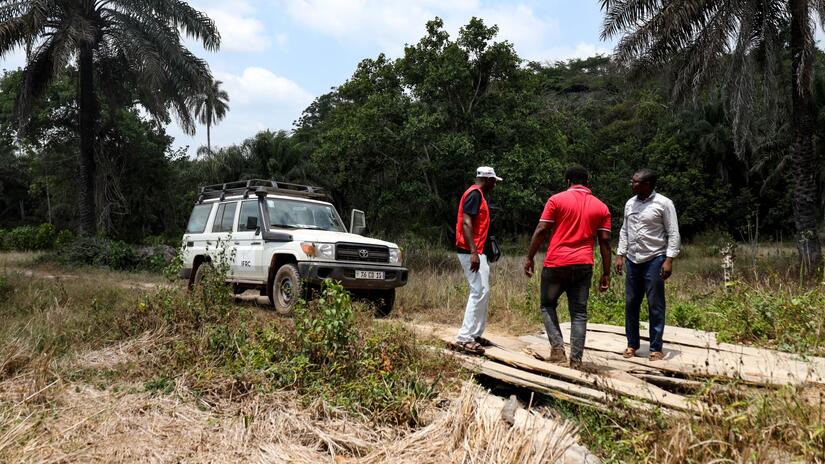
The route to Kailahun town is not easy. Even off-road vehicles can struggle with the bumpy terrain, narrow tracks and makeshift bridges.
Photo: James Tamba-Martha/Sierra Leone Red Cross Society
On his motorbike, with Baindu and Senesie on the back, Joseph embarked on the long, bumpy road to Kailahun—carefully navigating the treacherous terrain and crossing rivers along the way. Thankfully, they arrived safely and Senesie was quickly treated by hospital staff.
“Since I could help, I couldn’t let him die. So I made the decision to pay for the treatment because the parents couldn’t afford the cost,” explains Joseph.
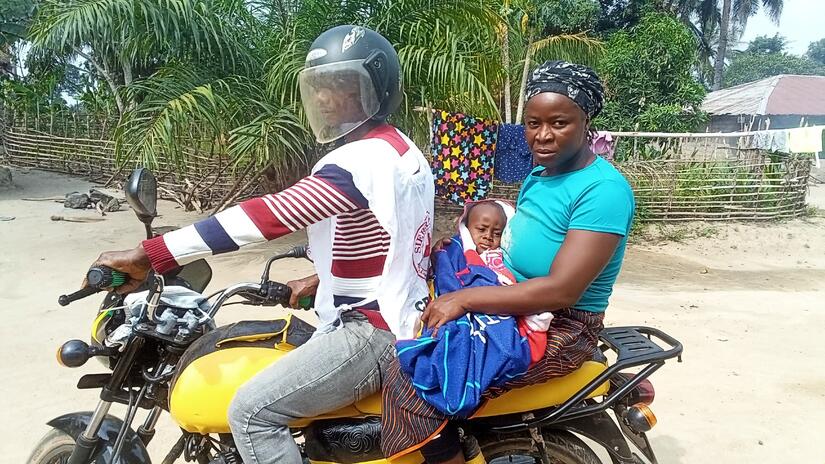
Volunteer Joseph, Baindu and baby Senesie sit together on Joseph's motorbike.
Photo: Sierra Leone Red Cross Society
Thanks to Joseph’s quick action and support, Senesie made a full recovery from malaria. After a week in hospital, Baindu and Senesie returned to their home in Gbaigibu. Joseph continues to check in on them to make sure they’re doing well.
“Joseph risked his life to save my son’s. Upon reaching the Kailahun Government Hospital, he paid for a blood transfusion that the medical practitioners had recommended. To me, Joseph is a true lifesaver who helped us in our time of need,” says Baindu.
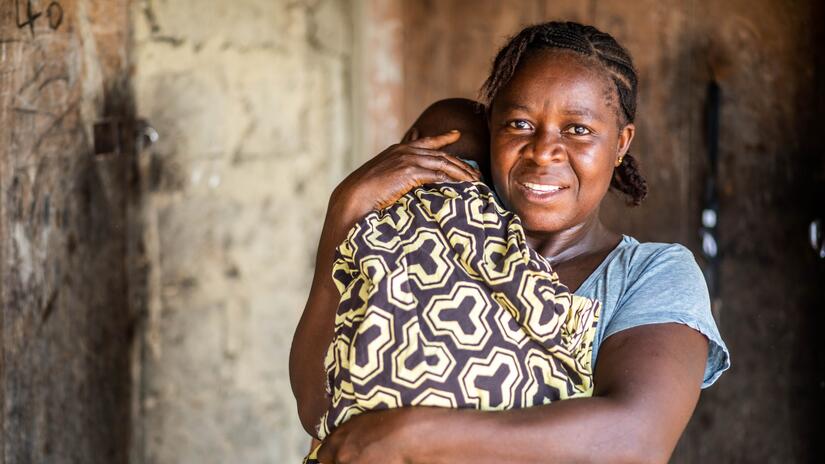
Baindu holds her son Senesie in March 2024, after his full recovery from malaria.
Photo: James Tamba-Martha/Sierra Leone Red Cross Society
Baindu isn’t the only person in Gbaigibu to be supported by Joseph. He regularly engages people in his community on how to prevent, detect, and respond to diseases—such as malaria, measles, and yellow fever—so they can stay healthy and safe.
Fomba Lamin, head of the Woroma Community Health Post, feels Joseph plays an invaluable role in encouraging village members to seek health support.
“We thank the CP3 programme, it is improving our referral rate. Community members we refer in the past did not go to Kailahun for obvious reasons: the means of transportation. But with people such as Joseph, who encourage our people to seek health care in Kailahun, we see the reduction of death in our community,” says Fomba.
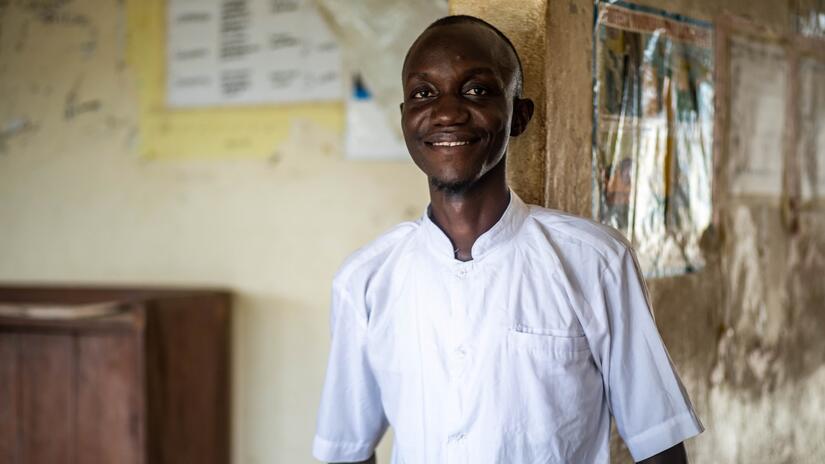
Fomba Lamin, Head of the Woroma Community Health Post, is grateful for the Sierra Leone Red Cross Society’s support in keeping his community members healthy.
Photo: James Tamba-Martha/Sierra Leone Red Cross Society
Although malaria is preventable and treatable, the death toll from the disease remains high for children under 5 and pregnant women, particularly in remote and hard-to-reach communities.
Key challenges to controlling malaria include a lack of reliable access to health services and prevention supplies, a decrease in global funding for malaria, and a widespread and increasing rise in insecticide resistance in malaria-endemic countries.
Recent innovations, such as the approval from WHO of new insecticide-treated nets (ITNs) to address insecticide resistance and two new malaria vaccines for children, are positive steps to tackling the disease.
Through programmes like CP3, the IFRC is supporting Red Cross and Red Crescent Societies worldwide to plan and deliver high-quality malaria prevention activities, such as:
- Supporting ministries of health and their partners to plan and implement distribution of insecticide-treated bed nets through mass campaigns or continuous distribution channels.
- Administering preventive treatment to children as part of seasonal malaria chemoprevention campaigns.
- Promoting individual preventive practices through social and behaviour change activities to encourage people to sleep under a bed net every night of the year, seek prompt and early healthcare in case of fever or malaria-related symptoms, and attend antenatal care for malaria prevention.
This story from Sierra Leone is a great example of how National Societies are supporting communities to prevent and seek treatment for malaria, encouraging them to implement practices that will protect them from the disease, and improving their access to health care—even in remote and isolated communities.
The IFRC also houses and chairs the Alliance for Malaria Prevention, a global partnership that supports ministries of health and their financial and implementing partners with the planning and implementation of ITN distribution, primarily through mass campaigns. ITNs remain the most effective tool to protect at-risk communities from malaria.
--
Joseph, the volunteer mentioned in this article, is part of the Community Epidemic and Pandemic Preparedness Programme (CP3).
Funded by the U.S. Agency for International Development (USAID), the programme supports communities, National Societies, and other partners in seven countries to prepare for, prevent, detect and respond to disease threats.
If you enjoyed this story and would like to learn more:
- Visit the malaria page on IFRC.org
- Visit the Alliance for Malaria Prevention website
- Sign up to the IFRC’s Epidemic and Pandemic Preparedness Newsletter
- Follow the Sierra Leone Red Cross Society on X, Facebook and LinkedIn

